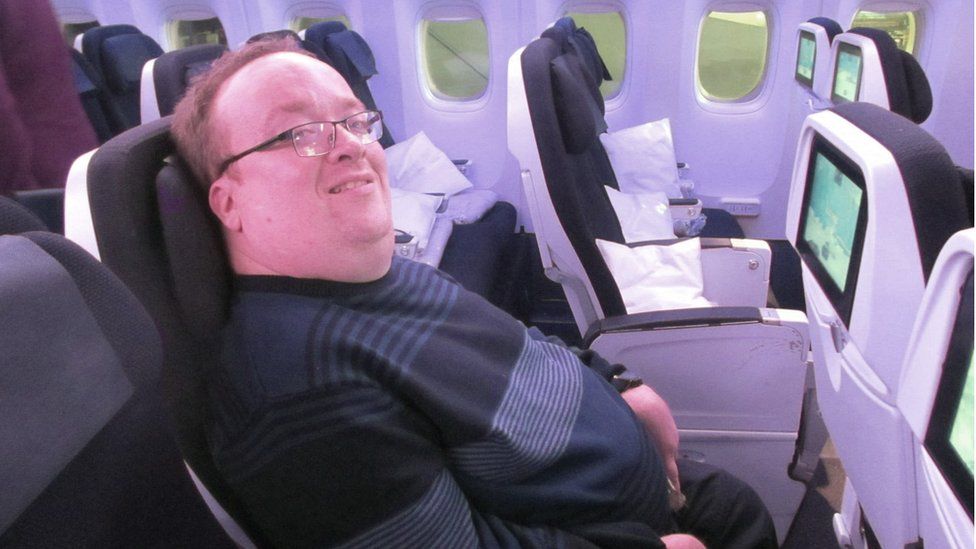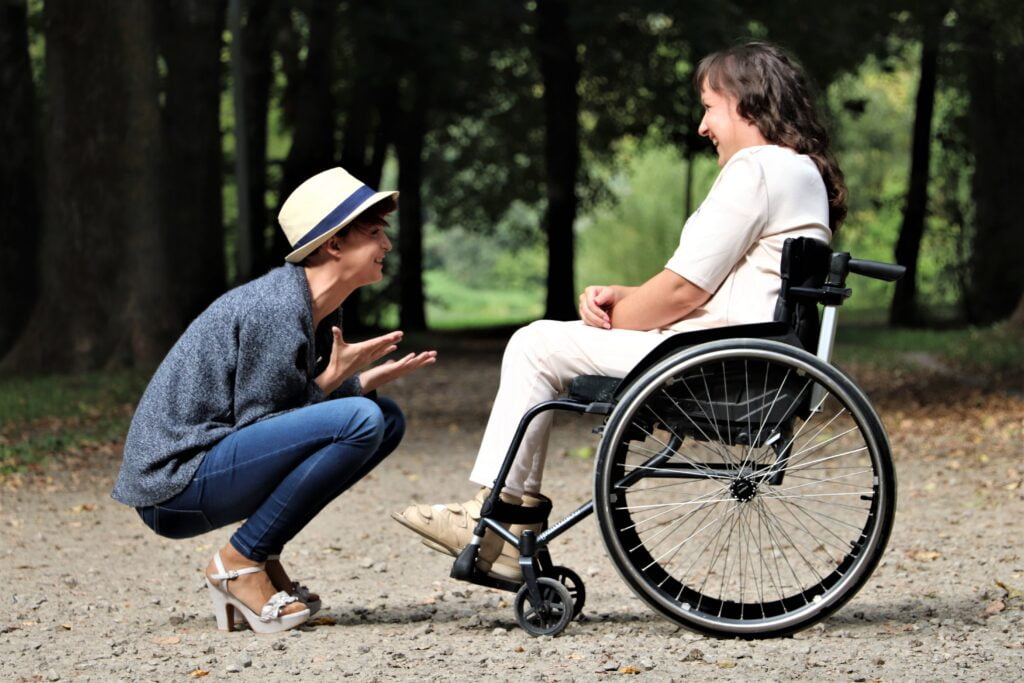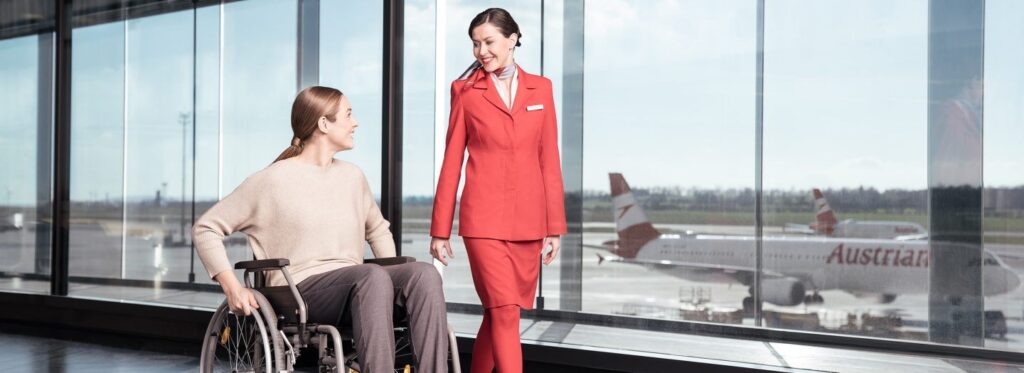Introduction
Can a Disabled Person Travel Abroad?: Traveling abroad is an exhilarating journey beyond one’s familiar surroundings, often involving crossing international borders to explore diverse cultures, landscapes, and communities. It’s a transformative experience where individuals venture outside their home country to immerse themselves in new languages, traditions, cuisines, and ways of life. Whether witnessing iconic landmarks, participating in cultural festivities, or simply embracing different lifestyles, traveling abroad encompasses the excitement and enrichment of exploring the unfamiliar.
This journey offers a broader perspective, encouraging personal growth, understanding, and appreciation for global diversity. It’s not just about physical movement; it’s about embracing new perspectives and broadening horizons.
Disabilities, in the context of travel, encompass a wide spectrum of conditions that may pose challenges to individuals when navigating unfamiliar environments. These disabilities could range from physical impairments affecting mobility to sensory differences like visual or hearing impairments, and even cognitive or neurodevelopmental conditions.
For travelers with disabilities, the experience of exploring foreign territories might involve encountering barriers that hinder accessibility. These barriers could include physical obstructions, such as a lack of ramps or elevators, communication challenges due to language differences, or the absence of accommodations tailored to specific needs.
Understanding disabilities concerning travel involves acknowledging the diverse requirements and accommodations necessary for individuals with disabilities to access and enjoy travel experiences fully. It entails advocating for inclusivity, promoting accessible infrastructure, and fostering an environment where everyone, irrespective of their abilities, can embark on and savor the joys of traveling abroad.
Exploring the World of Travel
This part aims to shed light on the hurdles faced by disabled travelers and the questions ranging from physical barriers to the lack of accessible facilities, while also highlighting the positive strides made in enhancing accessibility through technological innovations and improved accommodations and transportation options.
Can a Disabled Person Travel Abroad?: Challenges Faced by Disabled Travelers
Physical barriers: Disabled travelers often encounter physical obstacles that impede their mobility and access to various destinations. These barriers could range from the absence of ramps or elevators in public places to narrow doorways, uneven terrain, or inaccessible transportation systems. Such physical constraints can limit the ability of individuals with disabilities to explore and enjoy certain locations or attractions.
Additionally, architectural and infrastructural inadequacies in historical sites, hotels, or tourist spots might pose significant challenges for disabled travelers, preventing them from fully experiencing these destinations.
Lack of accessible facilities: Another significant challenge faced by disabled travelers is the lack of accessible facilities. Accessible facilities encompass a wide array of accommodations, including wheelchair-accessible restrooms, hotel rooms with necessary modifications, properly equipped transportation options, and information dissemination in formats suitable for individuals with diverse needs, such as Braille or audio guidance.

The absence of these facilities can create barriers, limiting the independence and comfort of disabled travelers, and ultimately impacting their overall travel experience.
Advancements in Accessibility
Technology aiding travel: Technological advancements have played a pivotal role in enhancing the travel experience for individuals with disabilities. From mobile applications providing information on accessible routes and locations to innovative devices aiding communication for those with hearing impairments, technology has significantly contributed to bridging the accessibility gap.
GPS navigation apps, virtual tours, and assistive devices tailored for specific disabilities have empowered disabled travelers by offering them tools to navigate unfamiliar environments more independently.
Improved accommodations and transportation: The travel industry has increasingly recognized the importance of inclusive accommodations and transportation options. Many hotels, airlines, and public transportation services have started implementing accessibility features. This includes wheelchair-accessible rooms, trained staff to assist disabled guests, and modified vehicles equipped with ramps or lifts.
Moreover, some destinations have adopted inclusive policies, ensuring that attractions and transportation systems are designed and maintained to accommodate the needs of diverse travelers, fostering a more inclusive and welcoming environment.
Real-Life Stories
This part aims to amplify the voices and experiences of disabled travelers, showcasing their perseverance, successes, and diverse journeys, ultimately inspiring others and promoting inclusivity in the realm of travel.
Personal Experiences of Travelers
These fictionalized examples aim to reflect common experiences encountered by disabled travelers, showcasing their determination, adaptability, and the joys they find while navigating through diverse travel scenarios.
Overcoming obstacles:
Sara’s Journey: Sara, a wheelchair user, embarked on a trip to Europe. Her journey was filled with challenges as she encountered historical sites with limited accessibility. Despite facing cobblestone streets and buildings without ramps, Sara’s determination led her to find alternative routes, seek local assistance, and utilize accessible transportation, enabling her to explore iconic landmarks and immerse herself in the culture.

Mark’s Triumph: Mark, who is visually impaired, ventured solo to Asia. Navigating bustling streets and language barriers posed initial challenges. However, with the aid of smartphone apps offering audio guidance and assistance from locals, Mark savored the vibrant markets, indulged in local cuisine, and discovered the beauty of tactile experiences, creating lasting memories through touch and sound.
Successes and joys of traveling:
Emma’s Inclusive Stay: Emma, who has a hearing impairment, found a hotel equipped with visual alarms and vibrating wake-up systems. This thoughtful accommodation allowed her to comfortably enjoy her stay without feeling isolated. Emma immersed herself in the local community, learning sign language basics and engaging in cultural exchanges, which enriched her travel experience.
Daniel’s Adventure: Daniel, with a cognitive disability, embarked on a nature expedition. Guided by a specialized tour service catering to diverse needs, he explored the wilderness. The patient guidance and structured activities provided Daniel with a sense of accomplishment, fostering his confidence and igniting a passion for outdoor adventures.
Highlighting Diverse Journeys
These fictionalized narratives are inspired by the common experiences shared by disabled travelers, showcasing their determination, advocacy for inclusivity, and the richness they bring to their diverse travel encounters.
Different types of disabilities and travel experiences:
Alicia’s Expedition: Alicia, who has a mobility impairment, embarked on a cross-country journey. Her experiences ranged from encountering fully accessible hotels to facing unexpected barriers in rural areas. Despite challenges, Alicia’s travel blog documented her strategies—utilizing travel apps to find accessible routes and collaborating with local communities to advocate for improved accessibility in remote regions. Her journey shed light on the importance of inclusive infrastructure for all travelers.
Carlos’s Cultural Exploration: Carlos, who is on the autism spectrum, embraced a solo trip to South America. His meticulous planning included sensory-friendly accommodations and structured itineraries. By immersing himself in local customs and participating in cultural workshops tailored for neuro-diverse individuals, Carlos felt a sense of belonging and contributed to creating awareness about travel experiences for people with cognitive differences.
Inspiring adventures around the world:
Maya’s Trek: Maya, a wheelchair user, conquered a challenging trek in Southeast Asia. Accompanied by an inclusive tour group specializing in adaptive adventures, Maya navigated rugged terrains and rainforests. Her awe-inspiring journey, shared through social media, sparked conversations about adventure tourism for individuals with mobility impairments, encouraging others to seek similar thrilling experiences.

Omar’s Urban Exploration: Omar, who is deaf, ventured into urban exploration across Europe. Engaging with local Deaf communities and utilizing visual communication methods, Omar delved into the vibrant art scenes and historical sites. His journey highlighted the beauty of sign language and fostered cross-cultural exchanges, promoting awareness about accessible experiences for the Deaf community worldwide.
Opportunities and Support
This part highlights the wealth of resources, organizations, government policies, and support systems available to empower and facilitate travel for individuals with disabilities, fostering inclusivity and accessibility within the travel industry.
Organizations and Resources
Organizations and Resources: Numerous organizations worldwide are dedicated to supporting disabled travelers. For instance, ‘Accessible Travel Organizations’ like Enable Travel, Mobility International USA (MIUSA), and Disabled American Veterans (DAV) provide resources, information, and tailored assistance for travelers with disabilities. These groups offer guidance on accessible destinations, accommodations, and transportation options, fostering a community that shares experiences and advice to facilitate smoother travels.
Furthermore, nonprofit organizations such as the Wheelchair Foundation and The Seeing Eye focus on providing assistive devices and service animals, respectively, catering to specific needs of disabled travelers and enhancing their mobility and independence during journeys.
Accessible travel guides and services: Accessible travel guides and services have become indispensable resources for disabled travelers. Platforms like AccessibleGO, Accomable (now part of Airbnb), and Sage Traveling offer comprehensive guides featuring accessible accommodations, attractions, and transportation options worldwide. These guides encompass detailed information on accessibility features, allowing travelers to plan their trips with confidence.
Additionally, specialized travel agencies like Travel-for-All and Enable Holidays curate custom travel itineraries tailored to specific disabilities, ensuring a hassle-free and enjoyable experience for travelers with diverse needs.
Government Initiatives
Policies promoting accessibility: Governments globally have been implementing policies to promote accessibility in travel and tourism. Legislation such as the Americans with Disabilities Act (ADA) in the United States, the European Union’s Accessibility Act, and similar regulations worldwide aim to enforce accessibility standards across various sectors, including transportation, accommodations, and public spaces.
These policies advocate for inclusive designs in infrastructure, ensuring that buildings, transportation systems, and tourist attractions comply with accessibility standards, thus enhancing the overall travel experience for disabled individuals.
Support systems in different countries: Many countries have established support systems to assist disabled travelers. Initiatives like Japan’s Barrier-Free Tourism Center and Australia’s National Disability Insurance Scheme (NDIS) offer support services, information, and resources to facilitate travel for individuals with disabilities. These systems provide guidance on accessible attractions, accommodations, and transportation options, promoting inclusive travel experiences within their respective countries.
Additionally, some nations offer subsidies or financial aid for disabled travelers, making travel more affordable and encouraging individuals to explore diverse destinations without financial barriers.
Additional Information
The Evolution of Accessible Travel: Empowering Journeys and Inclusive Opportunities. These headlines provide a structured overview, followed by detailed explanations showcasing the impact of various organizations, policies, and real-life experiences in shaping the landscape of accessible travel
Enable Travel and MIUSA: Spearheading Accessible Travel Support. Enable Travel, a pioneering initiative in India, Enable Travel focuses on providing curated tours and tailored assistance for travelers with disabilities. Their efforts include accessible itineraries, trained assistance, and ensuring a range of accommodations suitable for various needs.
Mobility International USA (MIUSA): MIUSA, a non-profit organization based in the United States, champions global empowerment for disabled individuals through international exchange programs and inclusive travel opportunities. Their initiatives involve advocating for inclusive travel policies and promoting cultural exchanges for disabled travelers.
Airbnb’s Inclusivity Push: Accomable’s Impact on Accessible Stays. Accomable Acquisition: Airbnb’s acquisition of Accomable bolstered the availability of accessible accommodations on its platform. This integration brought forth filters and detailed accessibility features, allowing users to search for and book stays catering to their specific needs worldwide.
Global Accessibility Policies: ADA, EU’s Accessibility Act, and Beyond. Americans with Disabilities Act (ADA): The ADA in the United States serves as a benchmark for accessibility standards, mandating accommodations in public spaces, transport, and accommodations. It has significantly shaped accessibility policies and practices globally.
European Union’s Accessibility Act: The EU’s Accessibility Act aims to ensure accessibility across various sectors, from public services to products and digital environments. It emphasizes equal access for disabled individuals throughout the EU member states.

Country-Specific Support
Japan’s Barrier-Free Tourism & Australia’s NDIS: Japan’s Barrier-Free Tourism Center: Japan’s initiative offers comprehensive information on accessible attractions, transportation options, and accommodations. It focuses on enhancing the travel experience for disabled tourists within the country.
Australia’s National Disability Insurance Scheme (NDIS): Australia’s NDIS provides financial support and resources to promote inclusive travel. It aids disabled individuals in accessing accommodations, transportation, and other travel-related services.
Universal Design and Inclusive Travel: Transforming the Landscape. Universal Design Implementation: The concept of “Universal Design” emphasizes creating environments usable by all, regardless of abilities. It fosters inclusive travel by advocating for accessible infrastructure and services across various destinations.
Real Stories of Triumph
Sara’s European Adventure and Carlos’s Cultural Immersion: Sara, a wheelchair user, overcame challenges in Europe by utilizing alternative routes, seeking local assistance, and advocating for improved accessibility. Her journey highlighted the determination and resilience of disabled travelers.
Carlos’s South American Exploration: Carlos, on the autism spectrum, immersed himself in South American cultures through meticulous planning and engagement in sensory-friendly experiences. His journey showcased the richness of diverse travel experiences for individuals with cognitive differences.
Conclusion
Can a Disabled Person Travel Abroad?: This conclusion underscores the progress made in accessibility within the travel industry and encourages future travelers to embrace diversity, prioritize inclusivity, and actively contribute to a more accessible and inclusive travel landscape.
The accessibility landscape in travel has undergone significant transformation, marked by strides towards inclusivity and support for disabled travelers. Over time, concerted efforts from various stakeholders, including organizations, governments, and advocacy groups, have propelled substantial improvements in accessibility standards worldwide.
These advancements encompass architectural modifications, technological innovations, and policy implementations aimed at breaking barriers and ensuring equal access to travel experiences for individuals with disabilities.
Initiatives promoting accessible infrastructure, the proliferation of specialized resources, and the advocacy for inclusive policies have collectively contributed to enhancing the overall accessibility of travel destinations and services, marking a progressive shift towards a more inclusive travel landscape.
The future of travel rests on the bedrock of diversity, welcoming individuals of all abilities to explore the world. Embracing diversity in travel involves celebrating the unique experiences and perspectives that individuals with disabilities bring to the table. It entails fostering an inclusive environment that recognizes and accommodates diverse needs, promoting a richer, more vibrant tapestry of global exploration.
By acknowledging and appreciating this diversity, future travelers can actively contribute to creating a more inclusive and understanding world, one that values the unique contributions of every traveler. Inclusivity is not merely a buzzword but a fundamental aspect of the travel experience. It goes beyond physical accessibility, encompassing the ethos of creating environments where every traveler feels welcomed, respected, and empowered to engage fully with their surroundings.
Future travelers are encouraged to prioritize and advocate for inclusive experiences, supporting businesses and destinations that champion accessibility. By demanding and participating in inclusive travel, individuals contribute to a world where barriers dissolve, fostering a global community where every individual, irrespective of ability, can embark on transformative journeys, create lasting memories, and revel in the joy of exploration.

